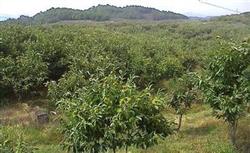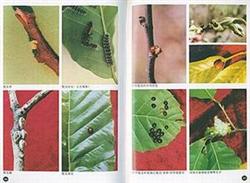Summer fertilization of Chinese Chestnut

In order to improve the yield and quality of Chinese chestnut, chestnut trees should be fertilized in summer. there are two main fertilization methods: soil fertilizer method: the soil fertilizer method is better in the chestnut orchard with thin soil and serious lack of fertilizer. A circular trench with a width of 25 cm and a depth of 20 cm was dug in the drip line of chestnut canopy. Each plant was applied 1 kg of superphosphate, 0.3 kg of urea and 0.25 kg of borax. When fertilizing, urea and borax should first be dissolved in water, and then ditch application, while fertilizing while splashing water. Return to the soil to fill the ditch in time after fertilization to prevent the volatilization of nutrients. If an appropriate amount of soil miscellaneous fertilizer is added to fertilize the soil, it is effective to promote the more fruit and reduce the empty bract rate of Chinese chestnut in the following year. Extra-root topdressing method: this fertilization method is effective for chestnut trees on all kinds of soil in summer. After mixing 0.3-0.4% urea solution, 0.3-0.5% potassium dihydrogen phosphate solution and 0.3-0.4% borax solution, spray the tree crown before 9: 00 a.m. or after 3: 00 p.m. on a sunny day, spray again every 10 days, and spray twice in a row. After spraying fertilizer, it should be sprayed again in case of heavy rain within 10 hours to ensure the effect of fertilization.
- Prev

Cultivation and Management of Chinese Chestnut
Castanea mollissima is a famous fine dried fruit tree of Fagaceae. Chinese people have thousands of years of cultivation history and accumulated rich experience. It occupies an important position in the economic life of our people. Chinese chestnut is rich in nutrition and delicious. It can be eaten fresh, fried, cooked and made all kinds of snacks and dishes. It has the characteristics of sweet, fragrant and waxy.
- Next

Control methods of insect pests in Chinese chestnut
1. Chestnut gall wasp, also known as chestnut tumor peak, adult head and abdomen dark brown, antennae filiform, brown, chest dilated, pitch black, lay eggs in the bud from June to July, and the larvae grow in the bud and overwinter. Spring buds sprout short branches, damaged branches or petioles and other inflated adult galls (tumors), withering branches and leaves and weakening the tree.
Related
- Moge, come on! The staff of the peasant association in the producing area of cantaloupe were frightened when the crowd gathered.
- Causes and Solutions of low Fruit setting rate of Apple
- Symptoms and control measures of passion fruit virus disease
- Fruit growing lesson: how do apple orchards keep high yields?
- Can you build orchards in the mountains? What are the pros and cons?
- How to manage the coloring period of Crisson grape?
- This paper introduces the processing technology of two kinds of fig products.
- How much is a month for retired teachers in rural areas by 2020?
- How can strawberry planting increase sugar content? We should pay attention to management in many aspects.
- What are the cultivation techniques on how to improve the yield of golden fruit?

